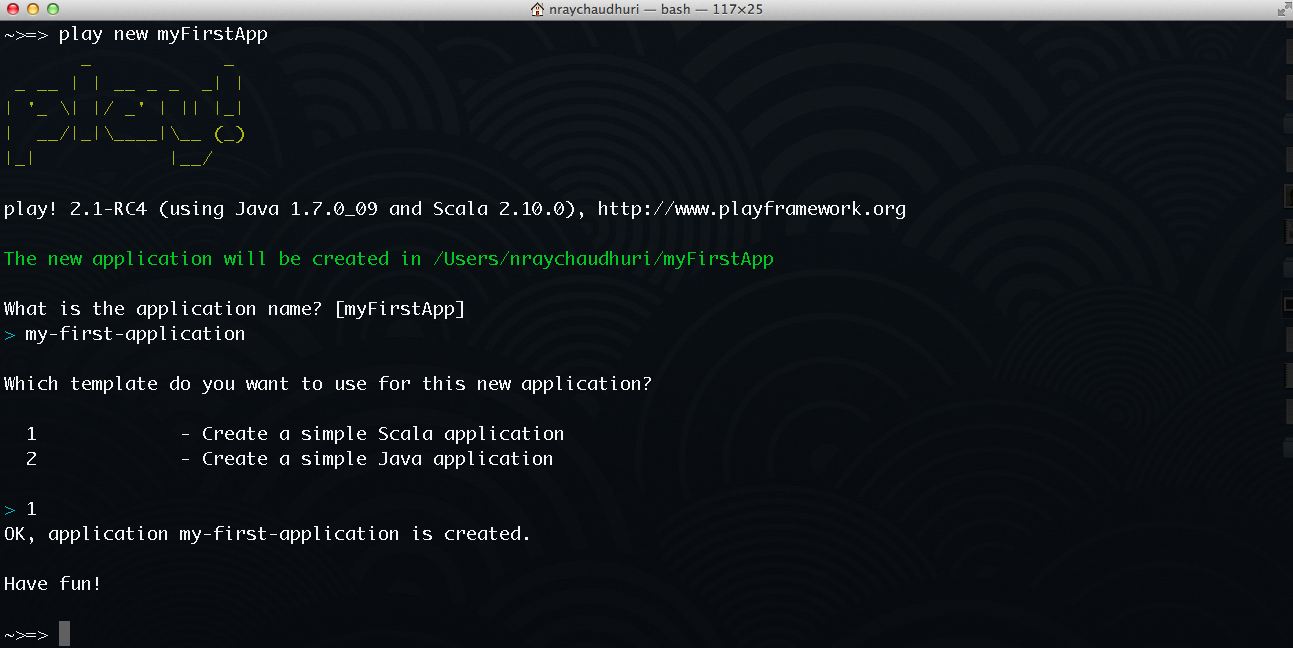§Creating a new application
§Create a new application with the play command
The easiest way to create a new application is to use the play new command.
$ play new myFirstApp
This will ask for some information.
- The application name (just for display, this name will be used later in several messages).
- The template to use for this application. You can choose either a default Scala application or a default Java application.
Note that choosing a template at this point does not imply that you can’t change language later. For example, you can create a new application using the default Java application template and start adding Scala code whenever you like.
Once the application has been created you can use the play command again to enter the Play console .
$ cd myFirstApp
$ play
§Create a new application without having Play installed
You can also create a new Play application without installing Play, by using sbt.
First install sbt if needed.
Just create a new directory for your new application and configure your sbt build script with two additions.
In project/plugins.sbt, add:
// The Typesafe repository
resolvers += "Typesafe repository" at "http://repo.typesafe.com/typesafe/releases/"
// Use the Play sbt plugin for Play projects
addSbtPlugin("play" % "sbt-plugin" % "2.1.0")
Be sure to replace 2.1.0 here by the exact version you want to use. If you want to use a snapshot version, you will have to specify this additional resolver:
// Typesafe snapshots
resolvers += "Typesafe Snapshots" at "http://repo.typesafe.com/typesafe/snapshots/"
In project/Build.scala:
import sbt._
import Keys._
import play.Project._
object ApplicationBuild extends Build {
val appName = "My first application"
val appVersion = "1.0"
val appDependencies = Nil
val main = play.Project(
appName, appVersion, appDependencies
)
}
You can then launch the sbt console in this directory:
$ cd myFirstApp
$ sbt
sbt will load your project and fetch the dependencies.
Found an error in this documentation? The source code for this page can be found here. After reading the documentation guidelines, please feel free to contribute a pull request. Have questions or advice to share? Go to our community forums to start a conversation with the community.




